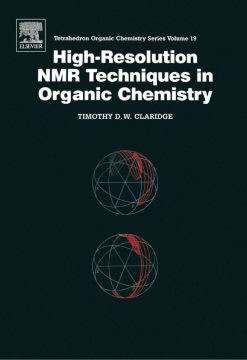
Additional Information
Book Details
Abstract
From the initial observation of proton magnetic resonance in water and in paraffin, the discipline of nuclear magnetic resonance has seen unparalleled growth as an analytical method. Modern NMR spectroscopy is a highly developed, yet still evolving, subject which finds application in chemistry, biology, medicine, materials science and geology.
In this book, emphasis is on the more recently developed methods of solution-state NMR applicable to chemical research, which are chosen for their wide applicability and robustness. These have, in many cases, already become established techniques in NMR laboratories, in both academic and industrial establishments. A considerable amount of information and guidance is given on the implementation and execution of the techniques described in this book.
Steven Firth
"This is a very well produced and nicely laid-out book. The descriptions, explanations, diagrams and spectra given here are clearer than in most of its rivals."
The Alchemist
Ben Shoulders
"The explanations are clear and concise, the references are well done and up-to-date. This book is a practical guide for the beginner as well as a launching pad for the NMR enthusiast. It should be found in every NMR facility."
J.A.C.S
Rickey P. Hicks
"The book is an excellent reference source and guide for the most common NMR experiments used by organic chemists, and it is also an excellent textbook for organic graduate and postdoctoral students. Overall this a very good text, both well written and easy to understand. I highly recommend the text."
Journal of Natural Products
Ruth Gschwind
"For the budding NMR spectroscopist, for the synthetic chemist with an interest in and contact with NMR spectroscopy, and also as a foundation for graduate-level courses on NMR techniques, this book is highly recommended. It is essential for every NMR laboratory dealing with small and mid-sized molecules"
Angewandte Chemie
